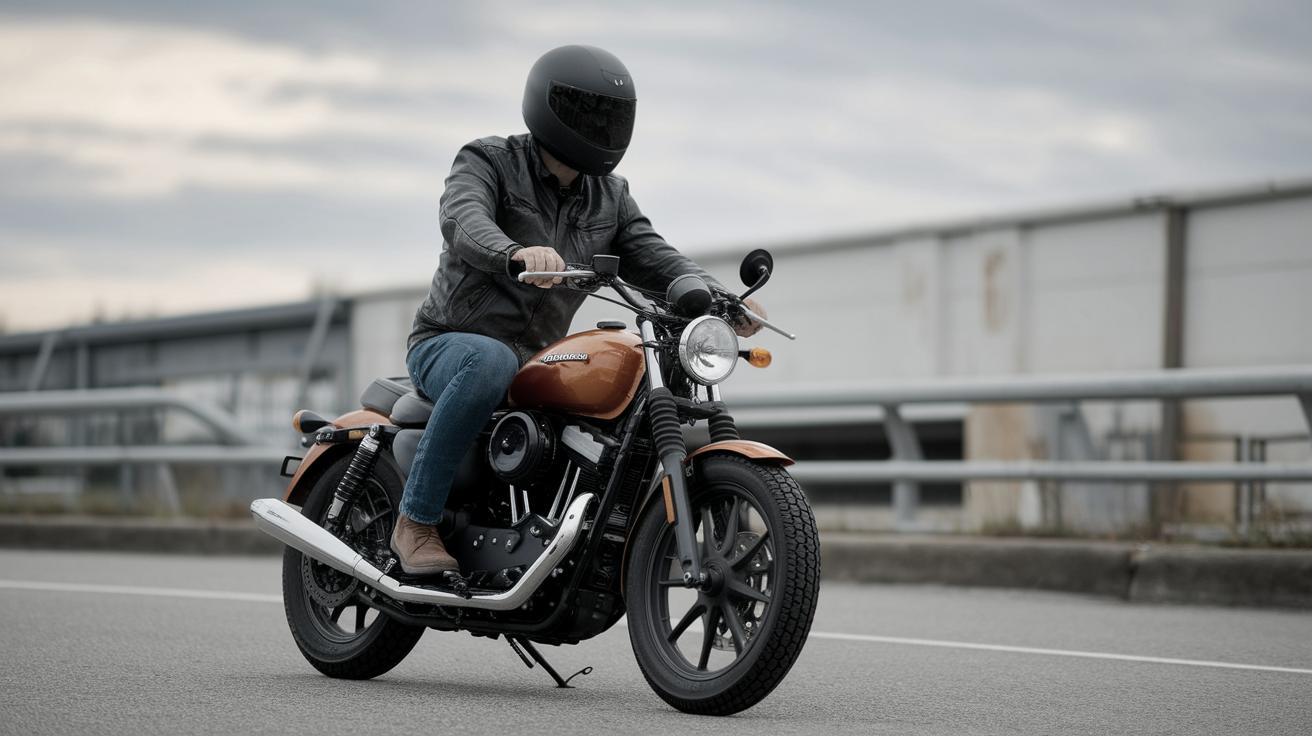Signs of a Worn-Out Motorcycle Tire
As motorcyclists, keeping our rides in peak condition is a priority, and maintaining tire health is a crucial part of that. Worn-out tires compromise safety, affecting the bike’s handling and your overall riding experience. This blog post will guide you through the signs of worn-out motorcycle tires, helping you identify when it’s time for a replacement. From general tire wear to unusual wear patterns and insufficient tread depth, understanding these signs ensures a smoother, safer ride. We will also explore what happens when tires don’t fit your bike or riding style and what your future steps should be.
1. General Tire Wear
Over time, all motorcycle tires will exhibit signs of wear and tear. This wear is typically uniform and results from consistent use over various surfaces. General tire wear is usually gradual and can be identified by observing the tread pattern, which becomes shallower as the miles roll by. This is a natural part of a tire’s lifecycle and timing its replacement correctly is crucial to safety.
Monitoring regular tire wear helps in understanding your tire usage. This involves keeping an eye on the tread depth and overall surface condition. Regular checks also ensure no anomalies are overlooked, which could lead to safety issues later. Riding habits and road conditions significantly influence the wear rate, demanding close attention to prevent degradation from escalating unintentionally.
2. Unusual Tire Wear Patterns
High Tire Pressure
Overinflation causes the tire to wear down quickly in the middle portion. This kind of wear pattern is due to excessive tire pressure that causes more contact with the road at the center compared to the edges, leading to a faster degradation process at the center line.
Maintaining optimal tire pressure as specified by the manufacturer is crucial. Regularly checking the pressure using a reliable gauge helps in identifying and correcting high pressure, preventing uneven wear and prolonging tire life.
Low Tire Pressure
Low tire pressure usually leads to increased wear on the outer edges of the tire. Underinflation causes the tire to flatten more, making the edges bear most of the load and friction, and thus wearing out more rapidly than the center tread.
To prevent low-pressure wear, it is advisable to check tire pressures routinely. Investing in a quality tire pressure monitoring system can provide real-time insights and alert you to any discrepancies.
Tire Cupping
Tire cupping or scalloping occurs when there are random worn-out spots around the tire perimeter. It is often attributable to a suspension issue or irregular tire pressure. These uneven wear patterns can lead to handling issues, causing vibration or a rough ride.
Addressing tire cupping requires thorough inspection of the bike’s suspension system and ensuring stable tire pressure. Prompt action can help mitigate further wear and ensure a safer riding experience.
3. Insufficient Tire Tread Depth
Tire Wear Indicator
Motorcycle tires come with built-in tread wear indicators positioned within the grooves. When the tread has worn down to the level of these indicators, it’s time for a tire change. Beyond this point, traction reduces dramatically, affecting the bike’s handling especially in wet conditions.
Inspecting the tread wear indicators should be a routine check for any rider. Maintaining healthy tread depth ensures maximum grip and safety, critical for both everyday rides and longer journeys.
4. Punctures, Cuts, or Sidewall Bubbles
Visible damage such as punctures, cuts, or sidewall bubbles demand immediate attention. These are more than just aesthetic issues; they compromise the structural integrity of the tire, potentially leading to sudden blowouts.
Regular visual inspections can help catch such issues early. If identified, it is best to replace the tire immediately to avoid any mishaps on the road. Consulting a professional can provide further guidance on how severely compromised the tire is.
5. Tires Don’t Fit Your Bike or Riding Style
Using tires that do not fit your bike or riding style can accelerate wear and compromise performance. Each motorcycle model and riding style demands specific tire characteristics to perform optimally.
Researching the appropriate tire type for your motorcycle and style can enhance ride quality. Seeking advice from tire experts helps ensure you fit the best-suited rubber, avoiding unnecessary wear and maximizing efficiency and safety.
Future Prospects
Keeping an eye on tire condition and being proactive about replacements ensures safety and performance. By understanding tire wear signs and responding appropriately, riders can enjoy their journeys confidently.
Regular maintenance and being informed about your motorcycle’s needs contribute significantly to its longevity and performance, fostering a hassle-free, enjoyable riding experience.
Need a New Set of Tires for Your Ride?
If you recognize any of the signs mentioned in this post, it might be time to invest in a new set of tires. Checking for available options and understanding product specifications like tread pattern and material can assist in making an informed decision. Consulting with professionals can also provide valuable insights tailored to your bike and riding habits.
| Category | Signs of Wear | Solution |
|---|---|---|
| General Tire Wear | Shallow tread, surface condition degradation | Routine checks and replace when worn |
| Unusual Tire Wear Patterns | Center/outer edge wear, cupping | Maintain correct pressure, inspect suspension |
| Insufficient Tire Tread Depth | Indicators align with tread surface | Replace tires |
| Punctures, Cuts, Sidewall Bubbles | Visible damage on tire surface | Immediate replacement |
| Tires Don’t Fit Bike/Style | Performance issues, rapid wear | Research and select appropriate tires |

Laisser un commentaire